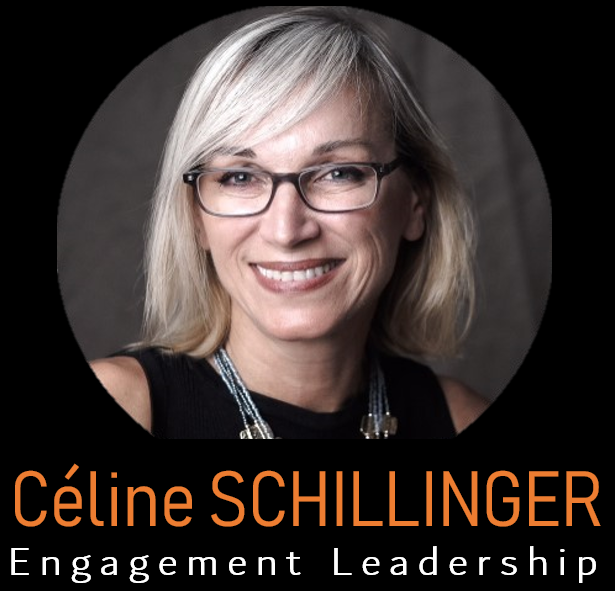Welcome to the Social Dance Floor
Keith Haring - Political Lane
“Social is not appropriate for our industry”, some still believe. Guided by their spreadsheet, they feel safe in the familiar environment of meetings and emails, responsibility assignment matrix, alpha male leadership, controlled communications, and stakeholder “management”. Their size and longevity reflects their success.
As a pledge to modernity, they brandish a corporate Twitter account or a brand Facebook page. Big deal. This is not going to save corporate dinosaurs from extinction. The social asteroid has exploded already, and its effects will be deadly if they don’t adapt.
The good news is: it is possible! All industries, even the most regulated ones, can become social. Everyone is welcome on the dance floor, even the big old corporations. They just need to learn and apply a new set of skills and behaviors.
Social Business, in and out
Social business is considered here as covering both “social inside the enterprise” and “external social media marketing and customer relations” (leaving aside the social or environmental mission of some businesses, and Yunus’ Social Business). Although two different phenomena, as Susan Scrupski explains in this interview to Stowe Boyd, both embody the same dynamic towards a more open, connected and engaged enterprise.
Besides, I believe an organization can’t be good at external social business if it doesn't enable an internal social culture. Why should this be necessary, when external-facing projects can be carried out by a multitude of expert service providers? Because social success doesn't rely as much on the mastery of specific tools or techniques, as it does with mindsets and social skills. Organizations can’t succeed in the long term if they don’t train their workforce to social, have them practice within the company boundaries, and embed social into their corporate culture.
Even regulated industries can dance
This is the second good news: a corporate “social behavior” is not innate. Even traditional companies can learn and thrive in the social world. True, the most regulated industries do face roadblocks on their way to becoming social – but these are not as specific as they might believe.
Being social means a company is able to connect and engage externally. Connect with its clients obviously, but also its regulators, suppliers, with the media, etc. This is an important point, since companies often mistake “social engagement” with “client engagement”. As a result, engagement efforts (and budgets) are focused on clients, siloed, and handled by Marketing or Comms, while I believe a much more holistic approach to stakeholders is required.
In the traditional or regulated industries considered here, companies have to make their social way across complex, unclear, sometimes non-existing regulations.
In Pharma, for example, some clear do’s apply (mention all side effects of drugs, speedily report adverse drug reactions), alongside clear don’ts (don’t advertise to consumers when not allowed, don’t promote off-label use of drugs) and… a vast territory of uncertainty. Consequences for infringing the rules can be harsh, from authorities’ warning letters to withdrawal of marketing licenses, penalties or judicial actions. Regulation can't be taken lightly. But the stakeholders that companies interact with on social media are not necessarily aware of, nor subject to the rules: patients may share an off-label use of a drug, an external partner may not recognize an adverse drug reaction experience… Still, if this happens on a digital platform or social streams that are sponsored by a pharmaceutical company, the latter is held responsible.
What is the typical answer to such challenges? Restrictions. Gatekeepers. Processes. Additional processes. Approval committees. Request forms. Monitoring. Suspicion. Self-censorship. As a consequence, industry’s half-hearted approach towards social business meets neither stakeholders nor shareholders’ expectations.
However, despite what holds it back, traditional industry can easily take a few steps towards social literacy, to connect and engage with its ecosystem.
From compliance to actual customer centricity
“Customer centricity” is claimed by everyone. But how many companies have actually made the effort to really listen, understand, and speak with (not “to”) customers?
K. Haring
Know who you dance with. Social listening is a tremendous resource to understanding the environment: who else is on the dance floor? What do they say, like, aim for, what drives them? As a complement to traditional market studies, social network analysis (SNA) and big data visualization provide fantastic insight to companies willing to listen. Dell has perfectly understood but this has yet to go mainstream in traditional industries. Way beyond mere “sentiment analysis” surveys, social listening provides such insight that it can open brand new strategic spaces for engagement. I’m grateful to Stephane Suisse (see his blog) for introducing me to SNA and for producing meaningful visualizations that have added great value to my projects. Valdis Krebs with Orgnet also provides precious expertise and support to SNA projects.
Move beyond bottlenecks and intermediaries. Forget the chaperons and gatekeepers. Organizations should aim, as much as much as possible, for direct connections with their dancing buddies – their stakeholders. Expert groups, patients associations, institutional bodies can be a resource, but they can’t be the final destination of all social efforts. Orgs should aim at a bigger and wider reach. Inclusive and cross-stakeholder approaches, where different audiences are brought together to nurture each other, are a great source of innovation. In parallel, orgs should train their own, internal gatekeepers. Unless they are shown and understand the big picture, they may well prevent social initiatives from happening - without meaning any harm. Mai Tran, an Executive VP at Ruder Finn Communications firm in Asia Pacific, often delivers lectures in pharmaceutical Compliance conferences – because “this is where it’s most needed”.
Leave your product in the cloakroom. Except for a few, cool consumer products, no one wants to engage with companies around their product. Sorry, but they’re just not interesting enough. The product stands at the “What” level that Simon Sinek describes. Only the “Why” level is truly engaging. Instead of applying social approaches to their products (it doesn’t work), companies should rather invest a bit of time and brainpower, identify the common purpose that can bring their stakeholders together, and build upon this. Promotion and broadcasting are still partly relevant, but they are not at the center of social engagement.
Several dancers are better than one. The old world of controlled communications required a single, media-trained-to-death spokesperson. This person, and this person only, was allowed to speak in the name of the company. Employees were deterred from speaking externally. But, social engagement needs a totally different perspective. Engaging at scale requires resources. Companies have those resources at arm’s length (employees!) and it would be a shame not to use them. Instead of limiting points of contacts, organizations should train and trust their people so that opportunities for engagement, connection and empathy expand. Trained employees can become the best social ambassadors as well as precious resources for monitoring and insights. This, in turn, creates a virtuous circle of internal engagement.
Learn how to dance! Social engagement is so different from what organizations are used to, especially in traditional and regulated industries, that one can’t expect an overnight big bang. Progress happens through pilot initiatives, here and there, led by forward thinking (and brave) change agents. Organizations should allow and nurture those initiatives, to learn from them. Also, they must relentlessly strive for diversity – in their workforce, their high potential pool, their management and leadership teams. To reflect the diversity of stakeholders, to integrate a variety of perspectives and experiences is crucial for establishing connections, developing empathy, and increasing collective connectedness skills. This is the number one success factor in the era of networks.
K. Haring
Even traditional industries can become social. They just need to be bold enough to dare think different. As Phil Weiss states it, it really starts with "Rethinking Thinking".
In my next blog post, I will address what it takes for traditional industries to become social organizations.



